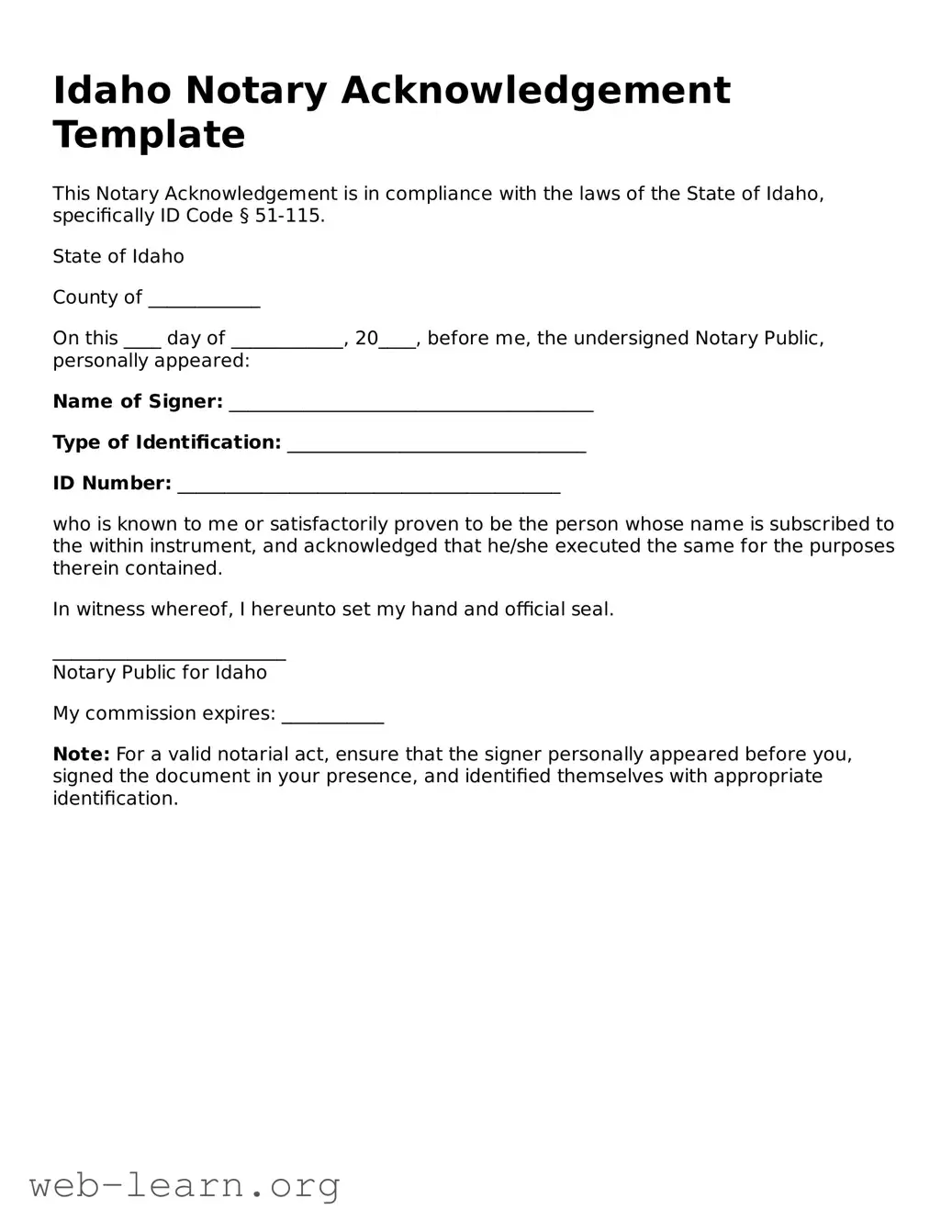Attorney-Approved Notary Acknowledgement Document for the State of Idaho
The Idaho Notary Acknowledgement form is a legal document that verifies a signature and affirms the identity of the person signing a particular document. This form plays a crucial role in the notarization process, ensuring that signatures are authentic and that the signer is acting voluntarily. Understanding how to properly complete this form is essential for individuals seeking to sign important legal documents in Idaho.
